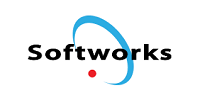Description

Cisco ISE

Openpath
Comprehensive Overview: Cisco ISE vs Openpath
Cisco Identity Services Engine (ISE)
a) Primary Functions and Target Markets
-
Primary Functions: Cisco Identity Services Engine (ISE) is a comprehensive network access control (NAC) solution. It provides centralized, context-aware identity management that grants secure access to network resources.
- Endpoint Profiling: Identifies devices connected to the network and assigns appropriate access levels.
- Policy Enforcement: Enforces security policies for users and devices accessing the network based on roles, device types, and locations.
- Guest Access Management: Facilitates secure, easily managed guest access to the network.
- Threat Detection and Mitigation: Integrates with other Cisco security solutions to detect and respond to threats dynamically.
- Posture Assessment: Evaluates the security posture of devices before they access the network.
-
Target Markets: Cisco ISE targets enterprises of all sizes, government, educational institutions, and healthcare organizations that require stringent security measures for network access and want to ensure compliance with security policies.
b) Market Share and User Base
Cisco, being a leader in networking technology, holds a significant share of the market for enterprise network solutions, including NAC systems. Cisco ISE is widely adopted across many industries due to its comprehensive feature set and integration capabilities with other Cisco products. The user base is large, consisting primarily of mid-sized to large enterprises and organizations with complex security requirements.
c) Key Differentiating Factors
- Integration with Cisco Suite: Seamless integration with Cisco’s extensive range of networking and security products.
- Comprehensive Security: Offers a broad set of security features aligned with modern enterprise environments.
- Scalability: Suitable for large-scale deployments with flexible architecture.
- Vendor Reputation and Support: Leveraging Cisco’s global presence and support infrastructure.
Openpath
a) Primary Functions and Target Markets
-
Primary Functions: Openpath is a modern access control system designed for building and office security. It focuses on mobile credentials and cloud-based access.
- Mobile Access: Enables the use of smartphones as secure, touchless access credentials.
- Cloud Management: Offers cloud-based access control management for real-time updates and analytics.
- Visitor Management: Streamlines visitor access processes.
- Custom Integrations: Supports integrations with existing security systems and platforms through APIs.
- Scalable Solutions: Designed to be easily scalable for any size of business.
-
Target Markets: Openpath primarily targets commercial real estate, office buildings, co-working spaces, educational institutions, and small to medium enterprises looking for modern, efficient access management solutions.
b) Market Share and User Base
Openpath, being a relatively newer entrant compared to traditional security systems, has quickly captured a niche within the market focused on cloud-based and mobile-first access control solutions. Its market share is growing, particularly among tech-savvy businesses and start-ups, and companies looking to modernize their access control systems. Its user base is continually expanding, particularly among small to medium-sized commercial real estates and enterprises.
c) Key Differentiating Factors
- Mobile-First Approach: Strong emphasis on using smartphones and mobile devices for access control.
- Cloud-Native: Built on a cloud-based model offering real-time management and analytics.
- User Experience: Focuses on ease of use and a modern user experience with features like touchless entry.
- Rapid Deployment: Fast to implement and easily scalable.
- Integration Flexibility: Offers versatile API integrations for customized solutions.
Comparison
While both Cisco ISE and Openpath are involved in access management, they differ fundamentally in their focus and approach:
-
Functionality: Cisco ISE is heavily network-focused, providing a comprehensive suite of NAC and security features suitable for large and complex enterprise environments. In contrast, Openpath offers innovative building access control solutions emphasizing convenience and modern cloud technologies.
-
Deployment Scale and Complexity: Cisco ISE is typically more complex and suited for larger organizations with substantial IT and security infrastructure, while Openpath appeals to smaller, agile businesses looking for straightforward, easily deployable access solutions.
-
Technology Focus: Openpath focuses on a modern, user-friendly access experience leveraging mobile technology, whereas Cisco ISE provides robust network security infrastructure.
In summary, while both products serve security purposes, they cater to different aspects of access control and would be chosen based on the specific needs and existing infrastructure of an organization.
Contact Info

Year founded :
Not Available
Not Available
Not Available
Not Available
Not Available

Year founded :
2015
+1 844-728-4247
Not Available
United States
http://www.linkedin.com/company/openpath
Feature Similarity Breakdown: Cisco ISE, Openpath
Analyzing Cisco Identity Services Engine (ISE) and Openpath involves exploring their core features, user interfaces, and unique offerings. While both are prominent in the realm of security, they serve slightly different purposes, which will be reflected in the breakdown:
a) Core Features in Common
Both Cisco ISE and Openpath focus on security and access control, so they share some overlapping features despite their different scopes:
-
Access Control:
- Both systems provide means to control who can access certain resources. Cisco ISE manages network access, while Openpath deals with physical access to buildings.
-
Authentication:
- Cisco ISE offers robust authentication protocols (e.g., RADIUS, TACACS+), while Openpath supports authentication for its physical access via mobile credentials.
-
Identity Management:
- Both platforms manage identities, though Cisco ISE focuses on identities accessing networks and Openpath manages identities accessing physical spaces.
-
Policy Enforcement:
- Cisco ISE enforces network policies, and Openpath implements access control policies for doors and entries.
-
Integration Capabilities:
- They both support integrations with various third-party systems to enhance their functionalities. Cisco ISE integrates with other Cisco products and security services, while Openpath can integrate with directory services like Azure AD.
b) User Interface Comparison
-
Cisco ISE:
- The Cisco ISE interface is designed for managing complex network policies, often reflecting a technical background. It offers detailed controls for IT administrators and can handle extensive configurations and policies. Navigating its interface typically requires some familiarity due to its depth.
-
Openpath:
- Openpath’s interface is generally more user-friendly and visually oriented towards simplicity, focusing on ease of access for managing physical premises. Its design caters more to general users and administrators looking to quickly manage entries and view access logs without needing deep technical knowledge.
c) Unique Features
-
Cisco ISE Unique Features:
- Network Access Control (NAC): Offers in-depth NAC capabilities that go beyond physical security, including profiling, posture assessment, and segmentation of the network.
- Advanced Threat Protection: Integrates with Cisco’s broader security ecosystem, offering advanced threat detection and response capabilities.
-
Openpath Unique Features:
- Mobile Access Control: Allows users to unlock doors using their smartphones, reducing the need for physical key cards or fobs.
- Touchless Entry: Offers touchless access solutions, particularly appealing in the context of heightened health and safety awareness.
- Customizable Guest Access: Quickly provides guests with access credentials, a feature tailored to physical space management.
In summary, while Cisco ISE and Openpath share some fundamental access control features, they are distinct in their areas of application—network vs. physical—and have interfaces and unique features that reflect these focuses. Cisco ISE is more suited for comprehensive network security, whereas Openpath excels in modern, user-friendly physical access solutions.
Features

Identity Management
Security
User Experience
Access Control
System Integration
Security Enforcement
Guest Access Management
Identity Management and Control
Network Visibility
Integration and Scalability

Access Control Management
Integration and Compatibility
User Management
Security and Monitoring
Best Fit Use Cases: Cisco ISE, Openpath
Cisco Identity Services Engine (ISE):
a) Best Fit Use Cases for Cisco ISE:
-
Large Enterprises:
- Cisco ISE is an excellent choice for large enterprises with complex networking needs. Its ability to provide centralized management for thousands of devices makes it ideal for large-scale operations.
-
Industries with Strict Compliance Requirements:
- Industries such as finance, healthcare, and government, which require stringent security and compliance measures, can benefit from Cisco ISE’s robust access control and policy enforcement capabilities.
-
Organizations with BYOD Policies:
- For businesses that allow Bring Your Own Device (BYOD) policies, Cisco ISE provides secure onboarding and consistent policy enforcement across diverse devices and users.
-
Network Segmentation Needs:
- Cisco ISE is suited for businesses that need advanced network segmentation to isolate sensitive data and operations from general traffic, enhancing overall security.
-
Advanced Threat Protection:
- Companies looking to integrate advanced threat protection and response will find Cisco ISE’s capabilities for real-time threat defense and rapid remediation beneficial.
d) Industry Vertical and Company Size Fit:
- Cisco ISE is particularly beneficial for large enterprises and sectors requiring high security and regulatory observance. Its flexibility and comprehensive feature set cater well to verticals such as financial services, healthcare, higher education, and government agencies. The scalability allows Cisco ISE to handle large volumes of devices and users, making it suitable for multinational corporations.
Openpath:
b) Best Fit Use Cases for Openpath:
-
Small to Medium-sized Businesses (SMBs):
- Openpath provides a scalable and affordable cloud-based access control system ideal for small and medium businesses that need modern security without the complexity of large-scale enterprise solutions.
-
Commercial Real Estate:
- Landlords and property managers can use Openpath to manage access control across multiple tenants and properties. Its flexibility and ease of use are ideal for multi-tenant facilities.
-
Retail and Hospitality:
- Retail chains and hospitality businesses benefit from Openpath's mobile access capabilities, which can enhance customer and employee experience with seamless and secure entry solutions.
-
Tech-Savvy Businesses:
- Companies seeking modern, user-friendly solutions that integrate with existing technology ecosystems will find Openpath's API and third-party integration capabilities useful.
-
Startups and Agile Teams:
- Startups and businesses requiring agility in their operations and quick deployment of security measures benefit from Openpath's remote management and easy scalability.
d) Industry Vertical and Company Size Fit:
- Openpath is well-suited for SMBs and innovative sectors like technology and coworking spaces, where flexibility, ease of use, and modern integration are priorities. It fits well within industries that prioritize customer-facing interactions and adaptive business models, such as retail, hospitality, and commercial real estate. Openpath's model ensures that businesses can scale their security efforts according to growth and changing needs.
By understanding the unique strengths and use cases for Cisco ISE and Openpath, businesses can make informed decisions about which solution best aligns with their operational goals and industry requirements.
Pricing

Pricing Not Available

Pricing Not Available
Metrics History
Metrics History
Comparing teamSize across companies
Conclusion & Final Verdict: Cisco ISE vs Openpath
When choosing between Cisco Identity Services Engine (ISE) and Openpath, it's essential to recognize that each product serves different primary functions, and the best overall value will depend on the specific needs and objectives of the organization.
a) Best Overall Value:
- Cisco ISE: Offers the best overall value for organizations primarily focused on network security, access control, and policy management. It is particularly valuable for large enterprises needing comprehensive security solutions across wired, wireless, and VPN connections.
- Openpath: Provides superior value for businesses seeking flexible, modern, and scalable access control for physical premises. It's ideal for companies looking for mobile-based entry systems and smart building integrations.
b) Pros and Cons:
Cisco ISE:
-
Pros:
- Robust security features tailored for network access control.
- Seamless integration with other Cisco products and network infrastructure.
- Comprehensive visibility and control over users and devices.
- Detailed policy management and strong AAA (Authentication, Authorization, and Accounting) capabilities.
-
Cons:
- Complex setup and deployment may require specialized IT personnel.
- Higher initial investment and licensing costs.
- Steeper learning curve for management and operation.
Openpath:
-
Pros:
- User-friendly interface with mobile-first design for easy access management.
- Scalable and flexible architecture suitable for a range of business sizes.
- Convenient remote management and smart building integrations.
- Cost-effective for small to medium businesses transitioning to modern access systems.
-
Cons:
- Primarily focused on physical access control, lacking broader cybersecurity features.
- Dependency on smartphone compatibility and network connectivity.
- Less effective for organizations primarily focused on network security.
c) Recommendations:
For users deciding between Cisco ISE and Openpath, the decision hinges on the organization's primary needs:
-
Choose Cisco ISE if:
- Your organization demands rigorous network access control, security, and compliance capabilities.
- You already utilize other Cisco network solutions and can benefit from seamless integration.
- You have the resources for skilled IT personnel who can manage a sophisticated security system.
-
Choose Openpath if:
- Your focus is on enhancing physical security with modern, mobile-enabled access solutions.
- You want an easily manageable system without extensive IT overhead.
- You are part of a small to medium business seeking a flexible and cost-effective security solution.
Ultimately, consider your organization's primary security priorities, existing infrastructure, and budget constraints when making your decision.
Add to compare
Add similar companies



